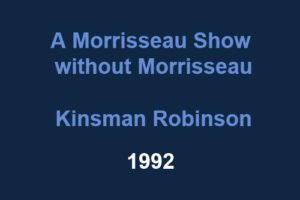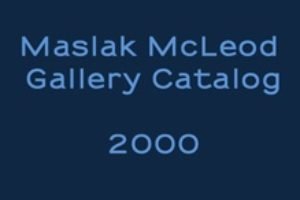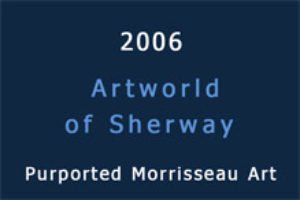Early on, someone coined the term ‘The Morrisseau Wars,’ and they were right. It’s been a long war with many battles. Numerous warriors have come and gone.
Forgery Production | Estimated
Gone is the Kinsman Robinson Gallery (KRG). It’s unfortunate, but in many respects, it was inevitable. I appreciate KRG for their efforts to stem the tide of thousands of fakes signed in dry-brush. They endured brutal targeting for years. I’ve also criticized them because I believe the gallery has misrepresented the authenticity of some paintings they allege to be Morrisseaus. The credibility of their prior authentications is tainted by a bias stemming from past sales of an early type of forgery that emerged in the early 1990s. My criticisms arise from a long-standing dispute over the authenticity of these 200-300 paintings.
In 2010 KRG and I reached an understanding: we would fight side-by-side to win the active war and deal with this first wave of forgeries after we addressed the issue of the dry-brush paintings.
Morrisseau Forgery up for auction in France | 1992

The Secret Morrisseau Exhibition: A Betrayal of Trust
In 1989, KRG signed Norval to an exclusive representative contract that resulted in many successful exhibitions. However just 3 years later, in 1992, KRG held a secret Morrisseau art exhibit in Toronto for invited clients only. They did not inform Norval, who was living on a reservation in British Columbia. The paintings in that exhibition, along with others by the same forger, appear to have entered the market primarily through Toronto galleries; Maslak McLeod, Kinsman Robinson and La Parette. With little-to-no artistic skill this forger utilized easily recognizable Morrisseau paintings sourced from published images to make poor copies and pastiches.
With the weight of their authority as Morrisseau’s principal art dealer KRG quietly sold what they could of this forger’s work. Some of the paintings even found their way into the Smithsonian and other notable museums. ( Smithsonian 1 | Smithsonian 2 | Smithsonian 3 ) One piece from their secret show was placed, by KRG, in the National Gallery’s 2006 “Shaman Artist” exhibition. Every painting in that incredible show was genuine, except that one.
1992 KRG Exhibition of Forged Morrisseaus
 Loading...
Loading...Side-by-side early forgeries linked to KRG
 Loading...
Loading...KRG’s Morrisseau Art Book Controversy
In 1997, KRG published their first Morrisseau art book entitled “Travels to the House of Invention.” The gallery sent the text to B.C. for Norval’s approval, without including the accompanying images to be displayed. Norval came to Toronto for the book launch and was stunned to see the book displayed images of 12 inferior counterfeit Morrisseaus in a chapter called “Earlier Works.” He demanded that they republish the book without the fakes. In 2005, KRG republished the book under the title “Return to the House of Invention.” Eleven of the 12 fakes were removed; however, one was left in at the back of the book. This painting, dated 1969, entitled “Self Portrait: The Artist as Spiritual Leader,” was owned by Don Robinson and hung in his home.
In 1997, I was at the Robinsons’ home with Norval and Gabe for Thanksgiving dinner when the issue of Norval painting feathers came up. Norval said he didn’t paint feathers. Don said he did and proceeded to guide us to a room where a feathered painting with Morrisseau’s signature was hanging on the wall. “See Norval?” Don said. Norval said, “Well, I guess I ‘do’ paint feathers.” He turned to me and said, “Let’s go now,” so we left. He didn’t say much about it, but was both sad and angry, and I didn’t understand why until years later.

KRG has played a central role in the Morrisseau art world and should be commended for all the good they did, yet there are serious questions they needed to answer. They chose not to. Once the go-to authority on Morrisseau’s art, the Kinsman Robinson Gallery is now just a footnote in history.
Article written by Ritchie Sinclair
“The defendant was referred to by counsel in their submissions both as Ritchie Sinclair and Stardreamer. The defendant describes himself as the “artistic apprentice” of Norval Morrisseau. Consistent with the allusion to which I have already referred, the defendant expresses a concern that: “Many of the works that are attributed to Norval Morrisseau however, are in fact counterfeit, and have been produced solely for the purposes of capitalizing off of Norval Morrisseau’s fame and market value”. It seems, from the record, that the defendant has made it his personal concern to identify, uncover, make known and even publicize works said to be those of Norval Morrisseau which he believes are false. In his affidavit, he says: I have no interest in identifying counterfeit Morrisseau paintings other than to perform a public service and to assist in protecting the legacy of one of Canada’s foremost artists.”
Lederer J.







